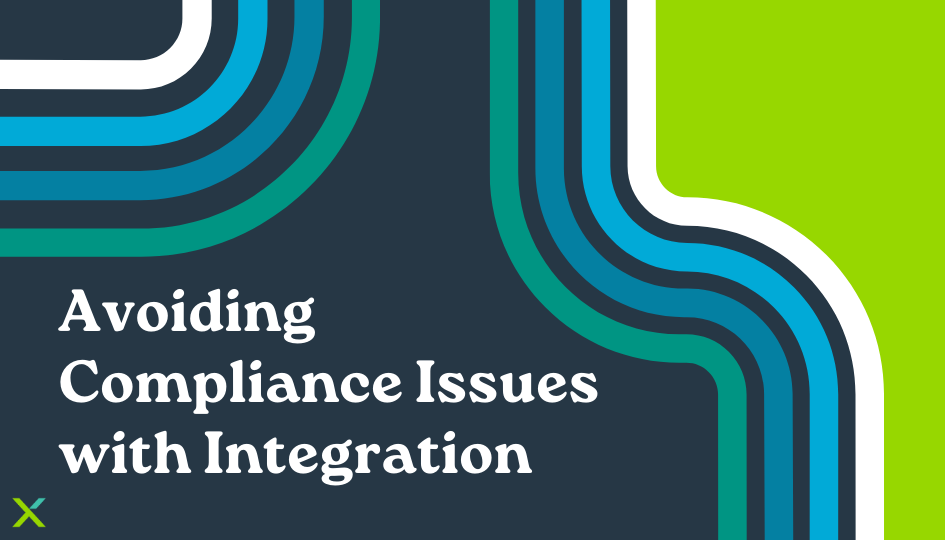
Complying with constantly changing regulations is a common challenge for utilities. As rules change frequently, utilities must continuously adapt to meet them. If they fail to comply, they could face penalties, legal action, or a damaged reputation.
For many utility organizations, data integration is becoming a standard way to solve the challenges laid out by ever-changing rules that govern their businesses. Utilities, including your own organization, can benefit from the increased data integrity and reliability that comes with implementing a comprehensive integration solution. Read on to find out how you could save quite a bit of work when it comes time to adapt to new regulations.
Utilities need to deliver vital services to their customers safely, consistently, and, in recent years, in increasingly environmentally-friendly ways. The most important regulatory agencies for utilities (and other organizations) to make note of are focused on safety and pollution regulations. Examples include the EPA, FERC, NERC, OSHA, and sometimes other local, state, or regional agencies. The bottom line is that there are a lot of regulations coming from these agencies, and utilities need to stay on top of them to ensure they’re not breaking any laws.
Keeping up with new regulations isn’t easy. It takes time to adopt new policies, design plans to comply with them, and ensure those plans are implemented correctly. For utilities that serve large customer bases and manage huge numbers of assets, it’s even more important to ensure that any changes are properly designed so they don’t cause issues for thousands or even millions of customers. Let’s look at how data can avoid those issues and simplify regulatory compliance.
Data collected and stored in enterprise asset management (EAM), customer information (CIS), geographic information (GIS), or other systems is key for compliance. These systems make tracking and reporting data to regulatory agencies easy – if they’re set up correctly.
For example, California’s General Order 165 requires annual maintenance inspections for many forms of electric equipment that have the potential to start wildfires in dry areas. It also requires records of those inspections be maintained for at least ten years. That’s a lot of data to keep track of!
Using an EAM system, your organization could store information like that equipment’s total age, install date, maintenance records, and the dates it has been inspected in the past. You could also instruct your asset management system to automatically remind you if an asset is due for inspection, or to print out a list of all the assets that need to be checked at any given time.
Integrating data from EAM systems with data from other CIS or GIS systems brings even more potential use cases into focus. Using an integration solution like the Geonexus Integration Platform (GIP), your organization could synchronize asset information from an EAM system with location data from GIS and customer information from CIS in near real-time. Being able to see where an asset is located, how long it’s been since it was serviced, and the customers depending on its functionality is incredibly valuable for everyday operations, but especially for compliance reasons.
Of course, there are limitless use cases like this one that are possible using data stored in various systems. But, to get the most value for your time, these systems (and integrations) need to be set up in a way that allows the automation of time-consuming tasks like the one outlined above.
Automating processes that can help avoid compliance issues is a huge boon to your organization’s operations, and it’s easy to set up using GIP. Here’s a few situations where automation can come in handy:
As you can see, the benefits of integration are far-reaching and long-lasting. No matter the size of your utility or the number of assets you’re managing, you can benefit from implementing an integration solution like the Geonexus Integration Platform.
Avoiding compliance issues sounds like it’s as simple as staying up to date with new regulations. But, when regulations are changing all the time, it becomes hard to keep track of everything. If you’re working with out-of-date, unorganized data, that makes following new compliance rules even more of a headache than it needs to be.
Utilizing a data integration solution like the Geonexus Integration Platform enables automatic error reporting, data synchronization across GIS, CIS, and EAM systems, and simplifies the process of regulatory compliance. With Geonexus, every utility can be confident their data is up to date and ready to pass off to regulatory agencies whenever that time comes.
At Geonexus our mission is to ensure integrity and reliability of enterprise data to support effective decision making. Our Integration Platform is an enterprise-grade integration solution that is easy to use, reliable, and includes out-of-the-box connectors for Esri® ArcGIS®, IBM® Maximo, SAP®, ABB® Ellipse, Oracle® Utilities, and other leading enterprise systems. Asset-intensive organizations across the globe use the Geonexus Integration Platform in industries including utilities, telecommunications, pipeline, transportation, and government.
We would love to show you what our Geonexus Integration Platform can do for you and your team. Submit your information, and we’ll be in touch.